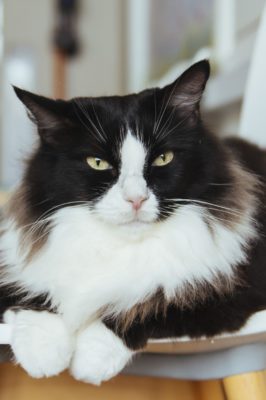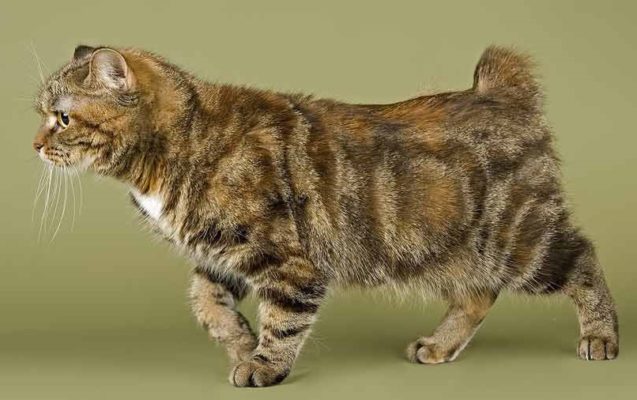Cymric
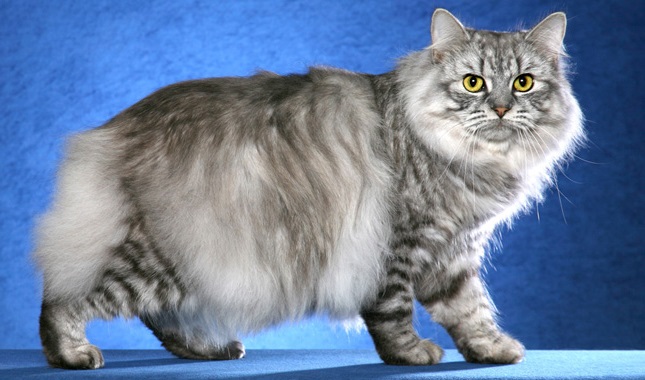
The Cymric is a true companion and faithful friend of man. Representatives of the breed are loyal and calm. Have a mild and balanced character. In moderately playful, affectionate, and not at all confrontational. Easily find common ground with other animals, including cats of other breeds. And in general, the Cymric and the dog – it’s the best friends. The Cymric is also patient with the antics of children.
Table of Contents
Breed Information
| Origin | Canada |
| Size | Males 29-32 cm Females 28-30 cm |
| Weight | Males 4.5-5.5 kg Females 3.5-4.5 kg |
| Fur Type | Semi-long-haired |
| Color | Any color variation is possible, except purple and auburn |
| Lifestyle | Outdoors, indoors |
| Lifespan | 8-14 years |
| FIFe Classification | Category III: “Short-haired and Somali” Breed designation – CYM |
| WCF Classification | Group 2: “Semi-long-haired” Breed designation – CYM |
| TICA Classification | CY |
| Group | Long-haired cats |
| Price | $300-500 |
Breed Photos
Origin History
The formation of the Cymric breed dates back to the 16th century. At that time, sailors on another voyage to the Isle of Man brought cats without tails. On the island and began distribution of cats, the constant characteristic of which from year to year remained tailless. Because of this characteristic, Cymrics are often confused with Manxes. But the Manx is a completely different breed, and they are also short-haired.
Sometime later, closer to 1963, the Cymrics were brought to Wales. It was then decided to cross Cymrics with other long-haired cats. The offspring were named Maine long-haired cats. The modern name stuck to the breed because of the word Cymru, the Welsh name for Wales. Canadian breeder Blair Wright named the breed.
The problem of non-acceptance of Cymrics as a separate breed was quite long. The breed is considered Canadian because of the determination of Canadian felinologists and breeders. They were obsessed with the idea of recognizing the breed as a separate type of cat. In 1980, one of the organizations recognized the Cymrics and permitted them to participate in various shows. Such a decision helped further the population of Cymrics.
Appearance
The Cymric is not confused with any other cat breed. Quite often, these charming four-legged cats are compared to baby bears. They are fluffy and clumsy. And the almost complete absence of a tail and long hair makes the gait of the Cymric too funny. It looks like a ball rolling across the room or a rabbit trying to run.
The body is oval-shaped, stocky. The sides are strong, and the back is short. The head of the Cymric is rounded, with pronounced cheekbones and protruding cheekbones. The ears are wide and pointed at the tips. The eyes are large and round. Located at an angle to the nose, their inner corners are higher than the outer. The color of the eyes depends on the color variant Cymric. Possible amber, copper, green, golden, hazel, orange, and yellow color eyes.
Limbs are small, hind legs stronger and longer than front ones. The paws are compact. The tail, or rather its almost complete absence, is the main feature of the Cymric. It is due to a natural mutation of the gene responsible for the tail. Researchers of the breed distinguish four types of tail:
- rumpy – the complete absence of the tail;
- rumpy-risers – a very short tail of 1.5-4 cm in length;
- stumpies view slightly longer than the previous one, 4-7 cm long, there may also be creases and corners;
- longies (fully tailed) – the tail’s habitual length (some breeders cut the tail off for such kittens a few days after birth).
The fur of the Cymric is long and soft with a very thick undercoat. The coat is smooth and silky to the touch. Allowed colors: white, blue, black, red, cream, silver, tortoiseshell, blue-cream, brown. Standard does not allow purple or brown coloration. Shades of color are possible: solid, tortoiseshell, bicolor, tricolor, striped moire, zonal and smoky.
Character
The Cymric is a true companion and faithful friend of man. Representatives of the breed are loyal and calm. Have a mild and balanced character. In moderately playful, affectionate, and not at all confrontational. Easily find common ground with other animals, including cats of other breeds. And in general, the Cymric and the dog – it’s the best friends. The Cymric is also patient with the antics of children.
He is not aggressive toward strangers, but he is wary. At first, it will be somewhat distrustful and restless to a stranger. Kimberries like to observe and accompany their owners, but this does not mean that the cat is intrusive. Cymric will never disturb its owner when he is resting, but on the contrary, he will keep him company and fall asleep on the couch.
Care
The double-layered, dense wool of the Cymric requires meticulous care. Without daily combing, you have the possibility of getting a new carpet of wool. Also, the Cymric’s long hair can become tangled in tangles without proper care. It is especially important to comb out the Cymric during the seasonal shedding period.
You should bathe your pet once every few months. Frequent water procedures are not necessary – they can spoil the appearance and condition of the coat. It is advisable to brush teeth, clean ears, and trim nails every two weeks.
Education
The owners of Cymrics note their good tendency to learn. They are inquisitive and responsive, which means they are sensitive to their owner’s requests. The only thing you need to remember is that Cymrics are quite touchy. Do not get hung up on harsh approaches to the pet and punishments – it will not bring any results. Only a positive attitude, encouragement, and persistence will help to achieve the goal.
Common Diseases
Breeding and normal formation of cymbals is a complicated process. It’s all due to the tailless gene. This gene affects not only the tail but the entire feline spine. Kittens who inherit identical genes can die in utero. It is called Mans syndrome. Only through proper parental selection are healthy and strong animals born. Also, Cymrics are prone to the following diseases:
- corneal dystrophy;
- obesity;
- coccyx arthritis.
Nutrition
It is important for the Cymric owner to monitor the pet’s food intake because the breed is prone to gaining excess weight. The diet of the Cymric should be balanced, and feeding should be regular. Choose only high-quality food that will meet the pet’s need for vitamins and minerals.
 Ocicat
Ocicat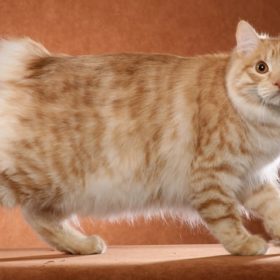 Kurilian Bobtail Longhair
Kurilian Bobtail Longhair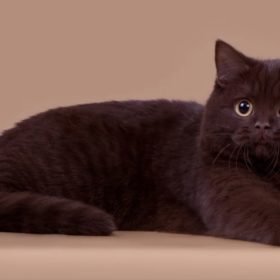 York Chocolate
York Chocolate Somali
Somali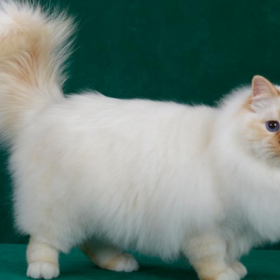 Ragamuffin
Ragamuffin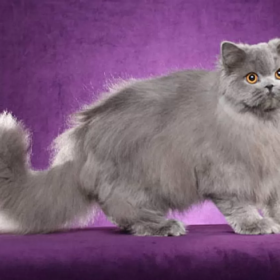 British Longhair
British Longhair